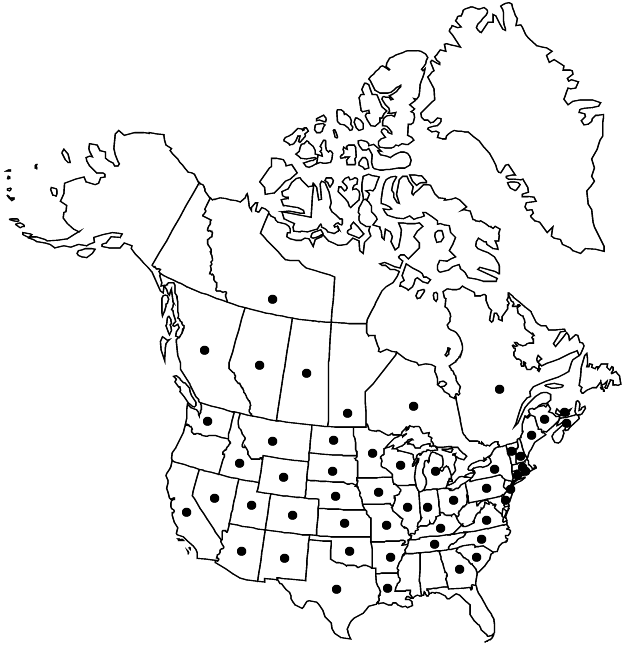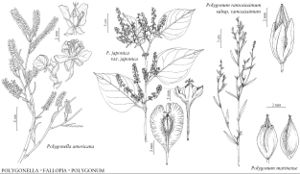Difference between revisions of "Polygonum ramosissimum subsp. ramosissimum"
FNA>Volume Importer |
imported>Volume Importer |
||
| (4 intermediate revisions by 2 users not shown) | |||
| Line 1: | Line 1: | ||
{{Treatment/ID | {{Treatment/ID | ||
|accepted_name=Polygonum ramosissimum subsp. ramosissimum | |accepted_name=Polygonum ramosissimum subsp. ramosissimum | ||
| − | |accepted_authority= | + | |accepted_authority= |
|publications= | |publications= | ||
|common_names=Renouée à fleurs jaunes | |common_names=Renouée à fleurs jaunes | ||
| + | |special_status={{Treatment/ID/Special_status | ||
| + | |code=W | ||
| + | |label=Weedy | ||
| + | }}{{Treatment/ID/Special_status | ||
| + | |code=F | ||
| + | |label=Illustrated | ||
| + | }}{{Treatment/ID/Special_status | ||
| + | |code=E | ||
| + | |label=Endemic | ||
| + | }} | ||
|basionyms= | |basionyms= | ||
|synonyms={{Treatment/ID/Synonym | |synonyms={{Treatment/ID/Synonym | ||
|name=Polygonum atlanticum | |name=Polygonum atlanticum | ||
|authority=(B. L. Robinson) E. P. Bicknell | |authority=(B. L. Robinson) E. P. Bicknell | ||
| + | |rank=species | ||
}} {{Treatment/ID/Synonym | }} {{Treatment/ID/Synonym | ||
|name=Polygonum exsertum | |name=Polygonum exsertum | ||
|authority=Small | |authority=Small | ||
| + | |rank=species | ||
}} {{Treatment/ID/Synonym | }} {{Treatment/ID/Synonym | ||
|name=Polygonum interior | |name=Polygonum interior | ||
|authority=Brenckle | |authority=Brenckle | ||
| + | |rank=species | ||
}} {{Treatment/ID/Synonym | }} {{Treatment/ID/Synonym | ||
|name=Polygonum latum | |name=Polygonum latum | ||
|authority=Small ex Rydberg | |authority=Small ex Rydberg | ||
| + | |rank=species | ||
}} {{Treatment/ID/Synonym | }} {{Treatment/ID/Synonym | ||
|name=Polygonum leptocarpum | |name=Polygonum leptocarpum | ||
|authority=B. L. Robinson | |authority=B. L. Robinson | ||
| + | |rank=species | ||
}} {{Treatment/ID/Synonym | }} {{Treatment/ID/Synonym | ||
|name=Polygonum stevensii | |name=Polygonum stevensii | ||
|authority=Brenckle | |authority=Brenckle | ||
| + | |rank=species | ||
}} {{Treatment/ID/Synonym | }} {{Treatment/ID/Synonym | ||
|name=Polygonum triangulum | |name=Polygonum triangulum | ||
|authority=E. P. Bicknell | |authority=E. P. Bicknell | ||
| + | |rank=species | ||
}} | }} | ||
|hierarchy=Polygonaceae;Polygonaceae subfam. Polygonoideae;Polygonum;Polygonum sect. Polygonum;Polygonum ramosissimum;Polygonum ramosissimum subsp. ramosissimum | |hierarchy=Polygonaceae;Polygonaceae subfam. Polygonoideae;Polygonum;Polygonum sect. Polygonum;Polygonum ramosissimum;Polygonum ramosissimum subsp. ramosissimum | ||
| Line 50: | Line 67: | ||
-->{{#Taxon: | -->{{#Taxon: | ||
name=Polygonum ramosissimum subsp. ramosissimum | name=Polygonum ramosissimum subsp. ramosissimum | ||
| − | + | |authority= | |
| − | |authority= | ||
|rank=subspecies | |rank=subspecies | ||
|parent rank=species | |parent rank=species | ||
| Line 64: | Line 80: | ||
|publication title= | |publication title= | ||
|publication year= | |publication year= | ||
| − | |special status= | + | |special status=Weedy;Illustrated;Endemic |
| − | |source xml=https:// | + | |source xml=https://bitbucket.org/aafc-mbb/fna-data-curation/src/2e0870ddd59836b60bcf96646a41e87ea5a5943a/coarse_grained_fna_xml/V5/V5_1123.xml |
|subfamily=Polygonaceae subfam. Polygonoideae | |subfamily=Polygonaceae subfam. Polygonoideae | ||
|genus=Polygonum | |genus=Polygonum | ||
Latest revision as of 22:08, 5 November 2020
Plants usually yellowish greenish when fresh or dried, heterophyllous. Stems 30–200 cm. Leaf blades light yellowish green, narrowly elliptic to lanceolate, rarely ovate, 35–70 × 7–18(–35) mm, apex acute to acuminate; stem leaves 2.1–3.5(–4.2) times as long as branch leaves; distal leaves usually 1–2 mm, not overtopping flowers, or 5–15 mm, surpassing flowers. Inflorescences axillary and terminal, spikelike; cymes crowded toward tips of branches, 2–5-flowered. Pedicels exserted from ocreae, 2.5–6 mm. Flowers: perianth (2.6–)3–4 mm; tepal margins greenish yellow or yellow, rarely white or pink; stamens 3–6(–8). Achenes enclosed in or exserted from perianth, (2.3–)2.5–3.5 mm, shiny or dull, smooth to roughened, sometimes uniformly or obscurely tubercled; late-season achenes 5–12 mm. 2n = 60.
Phenology: Flowering Jul–Oct.
Habitat: Disturbed places, sandy shores or saline soils and shores
Elevation: 0-1000 m
Distribution

Alta., B.C., Man., N.B., N.W.T., N.S., Ont., P.E.I., Que., Sask., Ariz., Ark., Calif., Colo., Conn., Del., Ga., Idaho, Ill., Ind., Iowa, Kans., Ky., La., Maine, Mass., Mich., Minn., Mo., Mont., Nebr., Nev., N.H., N.J., N.Mex., N.Y., N.C., N.Dak., Ohio, Okla., Pa., R.I., S.C., S.Dak., Tenn., Tex., Utah, Vt., Va., Wash., Wis., Wyo.
Discussion
Subspecies ramosissimum is heterogeneous; some additional elements may deserve recognition. It is closely related to European Polygonum bellardii Allioni, which was collected in south Boston in 1785 (B. L. Robinson 1902). The latter species has semi-open flowers, petaloid tepals with white or pink margins, and eight stamens. A distinct form of P. ramosissimum growing in saline marshes from California has been mistakenly identified as P. patulum Bieberstein (M. Costea and F. J. Tardif 2003b). The morphology of late-season achenes and the branching patterns, which have been emphasized by some authors, appear to have little taxonomic value.
Selected References
None.
